
Al Ain Oasis: A Verdant Haven in the Desert
Discover Al Ain Oasis, a UNESCO World Heritage site in the UAE, featuring ancient irrigation systems, lush date palms, and a serene escape from the desert heat.
Al Ain Oasis, situated in the heart of the United Arab Emirates, is a lush green escape from the arid desert surroundings. This UNESCO World Heritage site spans over 1,200 hectares and is home to more than 147,000 date palms of 100 different varieties. The oasis is a testament to traditional Falaj irrigation systems, which have sustained the region for centuries. Visitors can explore the shaded pathways beneath towering palm trees, offering a cool respite from the desert heat. The walkways are interspersed with ancient mud-brick buildings, providing a glimpse into the area's rich history and culture. The oasis is also home to a variety of wildlife, including birds and small mammals, making it a haven for nature lovers. Al Ain Oasis offers a unique blend of natural beauty and cultural heritage. It's an ideal destination for those looking to experience the tranquility of nature while learning about the ingenious methods used to cultivate life in the desert. Whether you're a history buff, a nature enthusiast, or simply seeking a peaceful retreat, Al Ain Oasis promises a memorable experience.
Local tips in Al Ain Oasis
- Visit early in the morning or late afternoon to avoid the midday heat.
- Wear comfortable walking shoes as the paths can be uneven.
- Bring water and stay hydrated, even though the oasis is cooler than the surrounding desert.
- Look out for informative plaques that provide insight into the history and significance of the oasis.
- Consider hiring a local guide for a more in-depth understanding of the Falaj irrigation system.
Al Ain Oasis: A Verdant Haven in the Desert
Al Ain Oasis, situated in the heart of the United Arab Emirates, is a lush green escape from the arid desert surroundings. This UNESCO World Heritage site spans over 1,200 hectares and is home to more than 147,000 date palms of 100 different varieties. The oasis is a testament to traditional Falaj irrigation systems, which have sustained the region for centuries. Visitors can explore the shaded pathways beneath towering palm trees, offering a cool respite from the desert heat. The walkways are interspersed with ancient mud-brick buildings, providing a glimpse into the area's rich history and culture. The oasis is also home to a variety of wildlife, including birds and small mammals, making it a haven for nature lovers. Al Ain Oasis offers a unique blend of natural beauty and cultural heritage. It's an ideal destination for those looking to experience the tranquility of nature while learning about the ingenious methods used to cultivate life in the desert. Whether you're a history buff, a nature enthusiast, or simply seeking a peaceful retreat, Al Ain Oasis promises a memorable experience.
When is the best time to go to Al Ain Oasis?
Iconic landmarks you can’t miss
Al Jahli Park
Explore Al Jahli Park in Abu Dhabi – a peaceful retreat with lush greenery, rich heritage, and recreational spaces for all ages.

Al Ain Palace Museum
Explore the Al Ain Palace Museum, a cultural gem showcasing the rich heritage and royal history of the UAE in a stunning architectural setting.

Al Wadi Park
Discover the serene beauty of Al Wadi Park, a picturesque oasis in Abu Dhabi perfect for relaxation and outdoor activities.
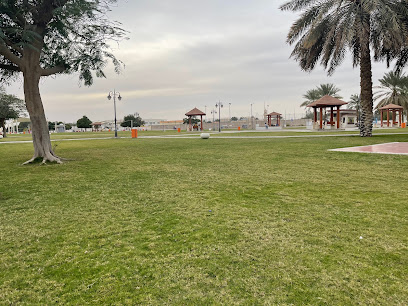
Al Ain Park
Explore the lush landscapes and serene beauty of Al Ain Park, a tranquil oasis in Abu Dhabi's vibrant heart.
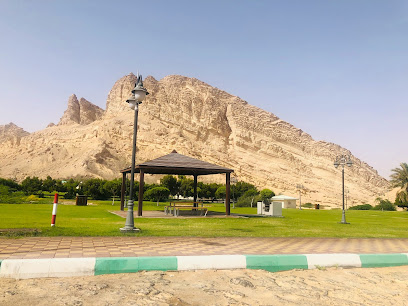
Al Jahili Fort
Discover the essence of Emirati history at Al Jahili Fort, a stunning fortress and cultural landmark in Abu Dhabi, showcasing rich heritage and captivating exhibitions.
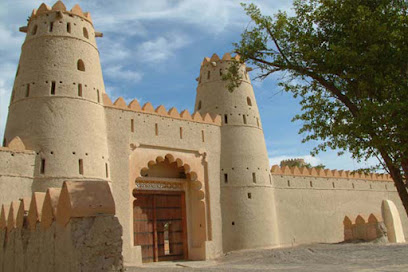
Al-Ain Clocktower
Discover the Al-Ain Clocktower, a stunning symbol of Abu Dhabi's heritage, surrounded by lush gardens and vibrant culture, perfect for all travelers.
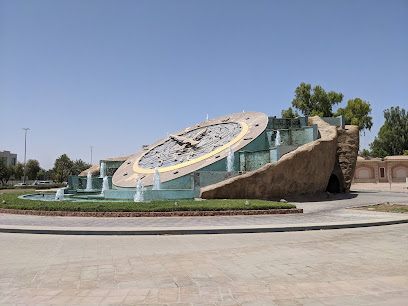
Al Ain National Museum
Discover the cultural heritage of the UAE at Al Ain National Museum, where history comes alive through fascinating artifacts and exhibits.
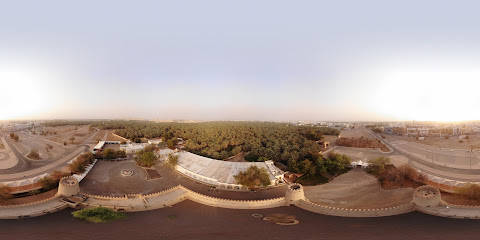
Hili Oasis
Explore Hili Oasis, a tranquil blend of archaeology and natural beauty in Abu Dhabi, perfect for history lovers and nature enthusiasts alike.
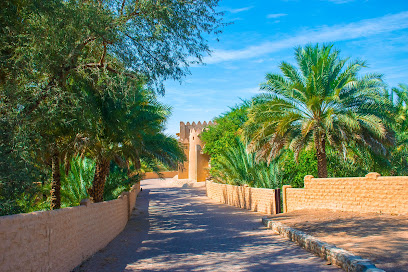
Jabal Hafeet parking lot
Experience stunning panoramic views of Al Ain at Jabal Hafeet parking lot, a must-visit tourist attraction in Abu Dhabi.
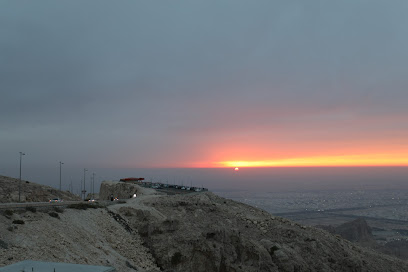
Green Mubazzarah Valley
Explore the natural wonders of Green Mubazzarah Valley with warm mineral springs, stunning mountain views, and serene picnic spots in Abu Dhabi.
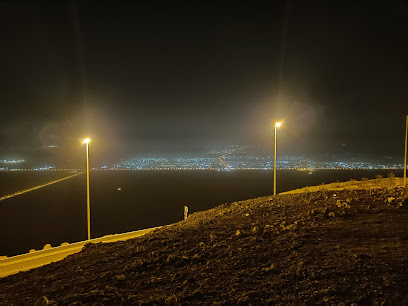
Minihill
Discover tranquility at Minihill, a beautiful park in Abu Dhabi, featuring stunning views of Al Ain city, perfect for relaxation and outdoor activities.

Al Nagfa
Experience the cultural richness and scenic beauty of Al Nagfa, a must-visit tourist attraction in Abu Dhabi that captures the spirit of the region.
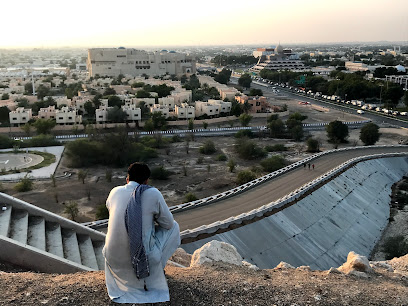
Panoramic Viewing Platform
Experience the stunning landscapes of Abu Dhabi from the Panoramic Viewing Platform on Jabal Hafeet, perfect for photographers and nature lovers alike.
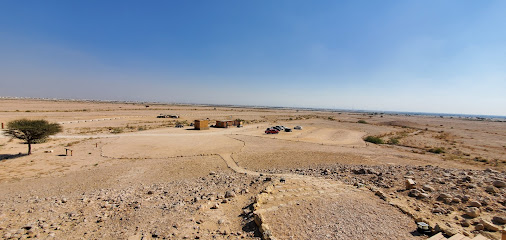
Bin Helal Fort Al Ain Abu Dhabi
Discover the rich history and cultural significance of Bin Helal Fort in Al Ain, Abu Dhabi—a must-visit historical landmark for every traveler.
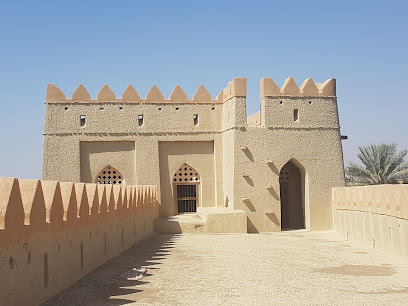
Al Qattarah Oases
Experience the tranquil beauty of Al Qattarah Oases, a serene escape in Abu Dhabi with lush landscapes and rich cultural heritage.
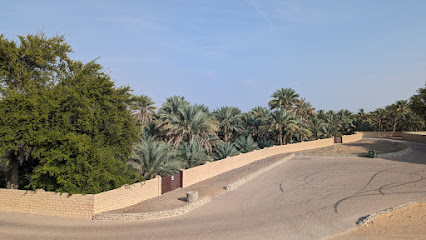
Unmissable attractions to see
Jahili Park
Experience the natural beauty and cultural heritage of Jahili Park in Abu Dhabi, a tranquil oasis perfect for relaxation and exploration.
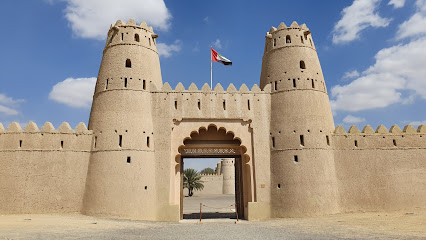
Sheikh Zayed Desert Learning Centre
Explore the rich ecological and cultural heritage of the UAE at the Sheikh Zayed Desert Learning Centre, a must-visit tourist attraction in Abu Dhabi.
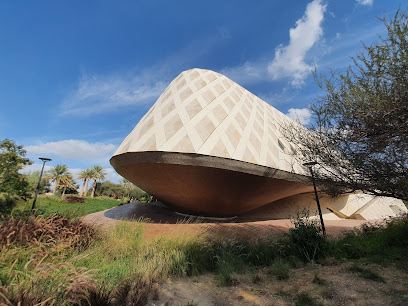
حديقة السليمي
Discover the tranquility of Al Mu'tarid Park, a green paradise in Abu Dhabi featuring fountains, walking paths, and family-friendly spaces.

Al Ain Ladies Park (Al Basra Park)
Experience tranquility and family-friendly fun at Al Ain Ladies Park, a serene oasis in Abu Dhabi, perfect for relaxation and connection with nature.
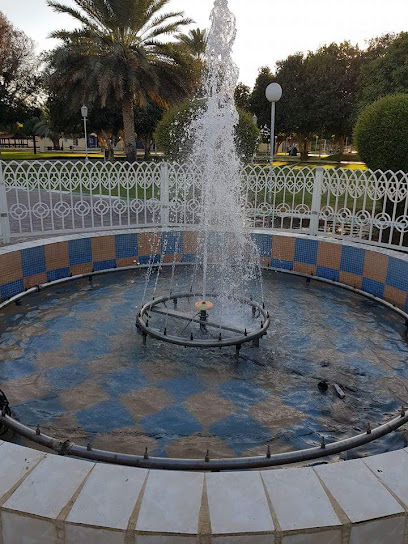
Souq Al Qattara
Explore Souq Al Qattara: A vibrant blend of tradition and modernity in Abu Dhabi's cultural heart, featuring crafts, cuisine, and captivating experiences.
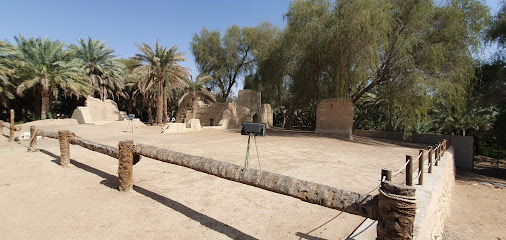
Al Ain Raceway
Discover the thrill of karting and motorsport excitement at Al Ain Raceway, a top recreation center in Abu Dhabi for adventure seekers.
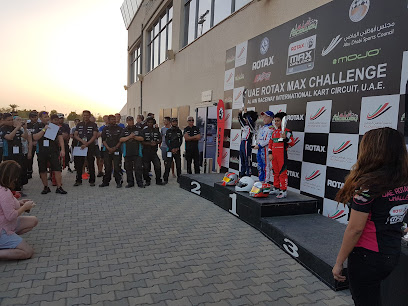
Al Ain Square Building 16
Experience the vibrant culture and stunning architecture at Al Ain Square Building 16 in Abu Dhabi, a must-visit tourist attraction.
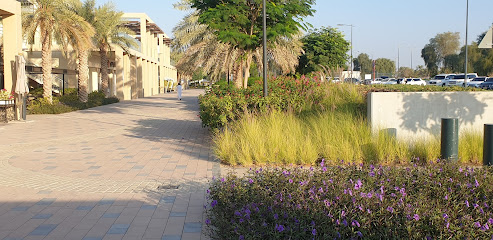
Al-Aini Park
Experience tranquility and nature at Al-Aini Park, a lush oasis in the heart of Abu Dhabi perfect for relaxation and outdoor activities.

Al Nabbagh Desert Al Ain صحراء النباغ العين
Experience the serene beauty and adventure of Al Nabbagh Desert in Al Ain, a desert landscape rich in natural wonders and cultural experiences.
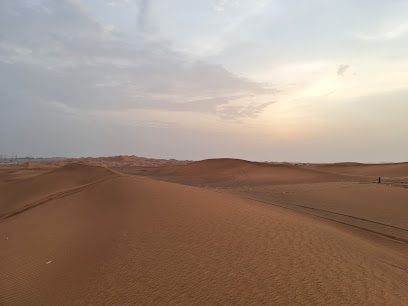
Minihill
Experience the lush tranquility of Minihill Park in Abu Dhabi, a perfect retreat for nature lovers and families seeking relaxation.
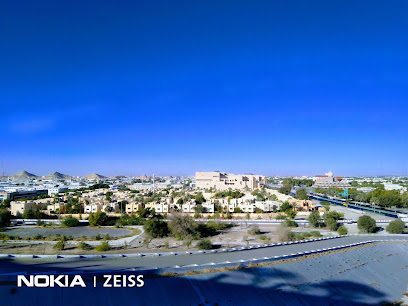
Al Ain Sportplex
Discover the ultimate sports destination at Al Ain Sportplex, perfect for families and athletes seeking an active day in Abu Dhabi.
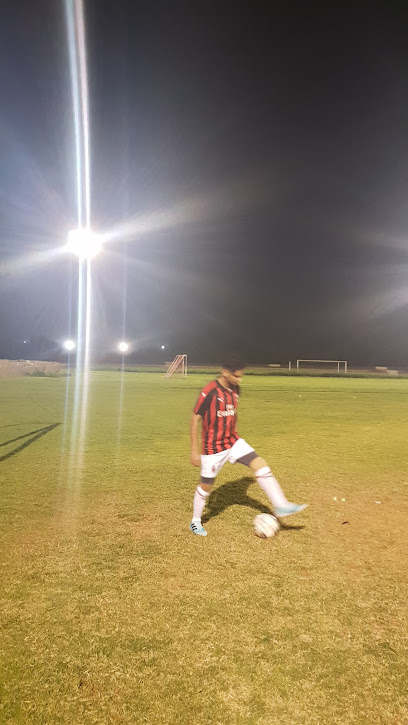
Al Nagfa
Experience the serene beauty of Al Nagfa, a hidden gem in Abu Dhabi known for its breathtaking landscapes and tranquil atmosphere.
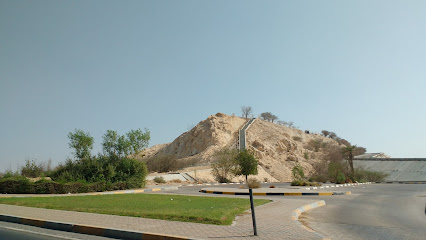
Oasis Jimi
Experience the serene beauty and rich heritage of Oasis Jimi, a captivating museum in Abu Dhabi, where nature and culture intertwine.
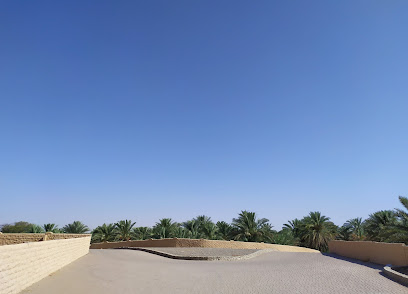
Bin Helal Fort Al Ain Abu Dhabi
Experience the rich history of the UAE at Bin Helal Fort, a remarkable historical landmark nestled in Al Ain, Abu Dhabi.

واحة القطارة
Discover the breathtaking landscapes and rich cultural heritage at Al Qattarah Oasis, a serene national park in Abu Dhabi.

Essential places to dine
Al Fanar Restaurant & Cafe
Discover authentic Emirati flavors at Al Fanar Restaurant & Cafe in Al Jimi – a delightful culinary experience awaits.
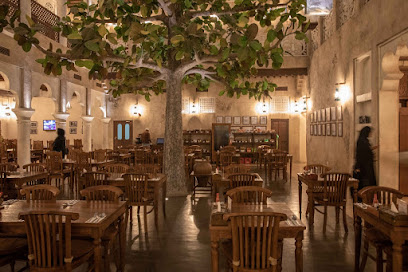
Al Yahar Modern Restaurant
Experience authentic Yemenite cuisine at Al Yahar Modern Restaurant in Abu Dhabi – where tradition meets flavor.
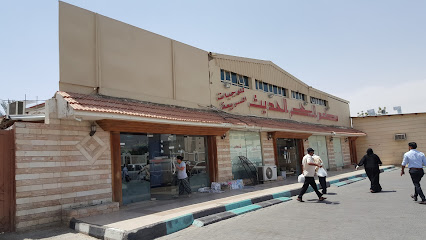
Golden Sheep Restaurant & Grills
Experience authentic Lebanese cuisine at Golden Sheep Restaurant & Grills in Al Ain - where every dish tells a story.
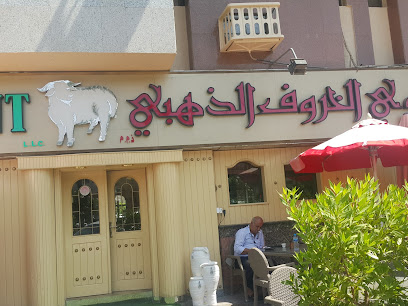
Wood House Restaurant Al Ain
Experience diverse culinary delights at Wood House Restaurant Al Ain - where Arabic flavors meet Italian classics and fresh sushi.
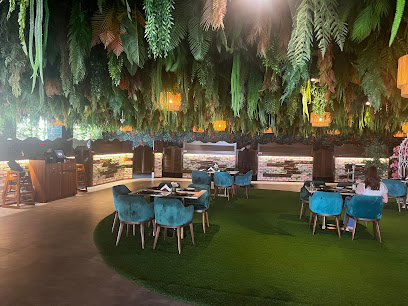
Abdul Aziz restaurant town center
Experience authentic Middle Eastern flavors at Abdul Aziz Restaurant in Abu Dhabi's vibrant town center.
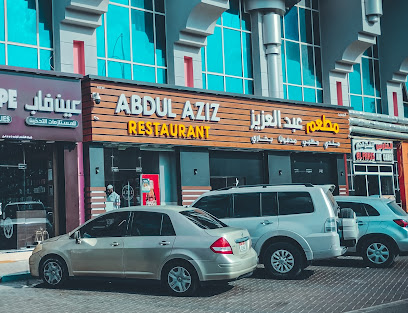
Al-Bayt Al-Shami Restaurant and Cafeteria, Main Branch
Experience authentic Syrian cuisine at Al-Bayt Al-Shami Restaurant in Abu Dhabi – where every dish tells a story of tradition and flavor.
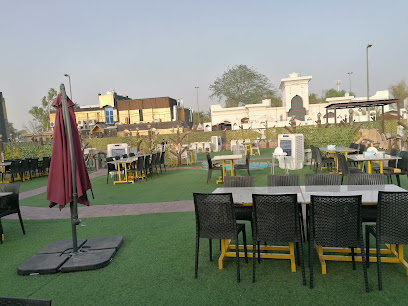
Leisure Center - Al Ain مطعم وكافيه ليجر - العين
Discover delightful flavors and family-friendly vibes at Leisure Center - Al Ain in Abu Dhabi, where every meal is a celebration.
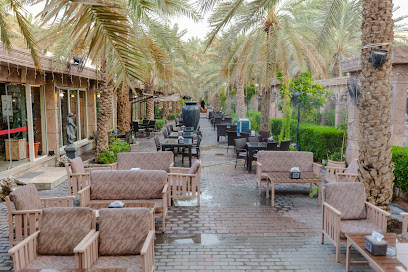
ALMALLAH Restaurant & Cafeteria
Savor the best of Lebanese cuisine at Almallah Restaurant & Cafeteria in Abu Dhabi - where flavor meets tradition!
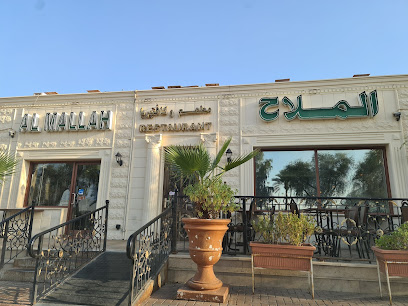
Arish Restaurant Al Ain
Discover authentic Lebanese flavors at Arish Restaurant Al Ain, where every dish tells a story.
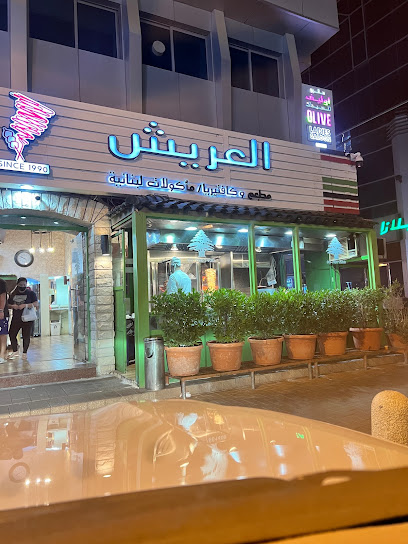
Al Diwan Resturant
Experience authentic Lebanese cuisine at Al Diwan Restaurant in Abu Dhabi - where tradition meets flavor.
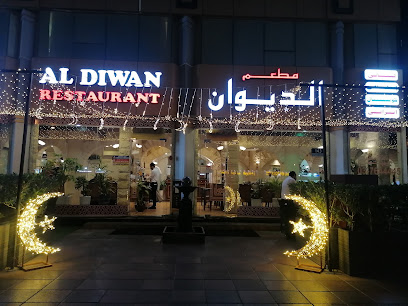
New Quetta Restaurant & Cafeteria L.L.C
Experience authentic Pakistani cuisine at New Quetta Restaurant & Cafeteria in Al Ain - perfect for breakfast lovers and food enthusiasts alike.
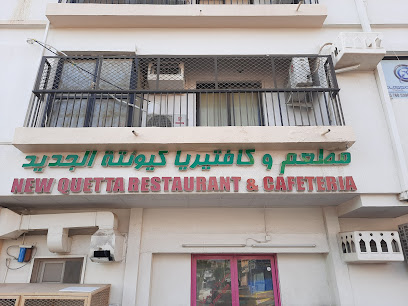
BAIT AL NAJOOM RESTAURANT
Discover authentic Emirati cuisine at Bait Al Najoom Restaurant in Al Ain - where tradition meets flavor.
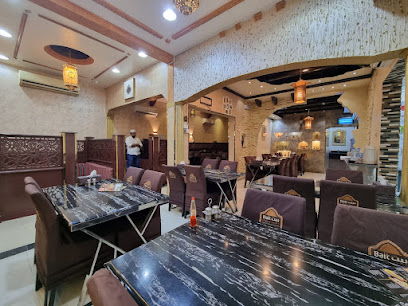
Unique Al Ain Restaurant L.L.C
Experience authentic Indian cuisine in Abu Dhabi's Central District at Unique Al Ain Restaurant – where flavor meets tradition.
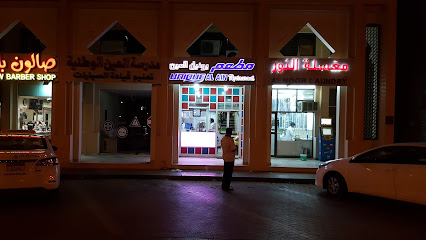
Al ain Golden Fork One Restaurant kg st
Experience authentic seafood cuisine at Al Ain Golden Fork One Restaurant in Abu Dhabi's Central District – where freshness meets flavor.

ZAHER EL LAYMOUN Restaurant
Discover the vibrant flavors of Syria at Zaher El Laymoun Restaurant in Abu Dhabi—where every dish tells a story.
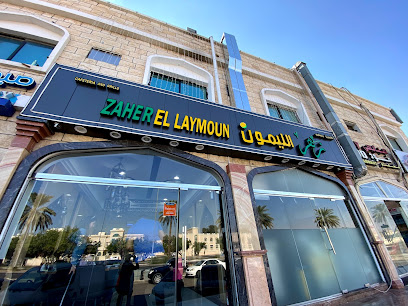
Markets, malls and hidden boutiques
Creek outlet center al ain
Discover the ultimate shopping destination at Creek Outlet Center Al Ain with diverse stores for clothing, cosmetics, and footwear.
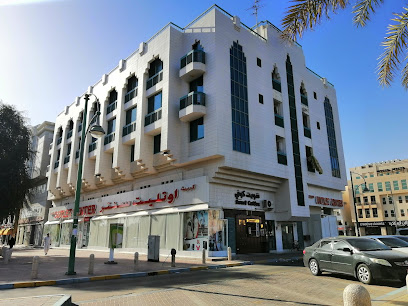
Al Tasali Games
Discover Al Tasali Games, a vibrant video game store in Al Ain offering a vast selection of games, consoles, and a welcoming community for all gamers.

Noor Al Hayath Trading LLC نور الحياة للتجارة ذ. م. م
Explore Noor Al Hayath Trading LLC in Abu Dhabi for a unique shopping experience featuring local goods and authentic souvenirs.

Paris Gift Palace
Discover a vibrant shopping experience at Paris Gift Palace in Abu Dhabi, where international styles meet local treasures.
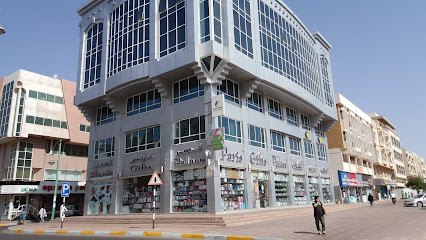
Sport outlet center
Explore the Sport Outlet Center in Abu Dhabi for a vast array of sports gear, apparel, and accessories in a vibrant shopping atmosphere.
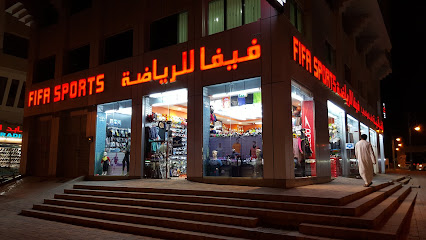
Meena Gift Town LLC
Explore Meena Gift Town LLC for unique gifts and souvenirs that embody the spirit of Abu Dhabi's vibrant culture and craftsmanship.
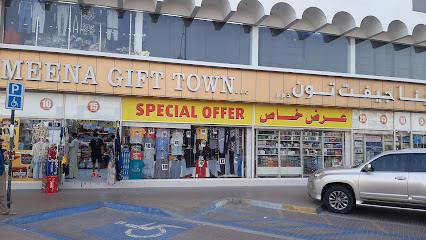
Ajmal Perfumes
Discover the essence of Middle Eastern perfumery at Ajmal Perfumes, where tradition meets luxury in every exquisite scent.
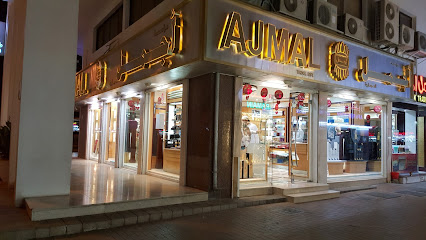
Kala Al Ain Textorium - كلا العين الأقمشة
Explore the vibrant world of textiles at Kala Al Ain Textorium, where tradition meets contemporary fashion in the heart of Abu Dhabi's Central District.
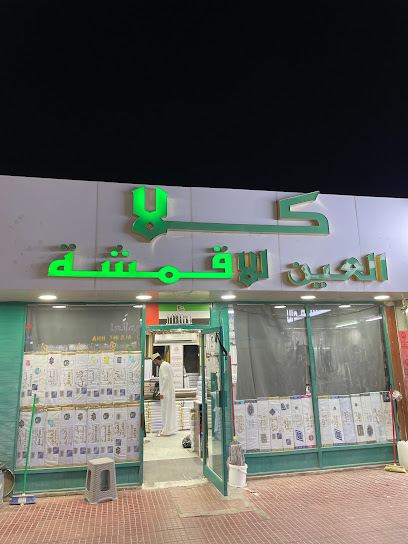
Afghan General Stores
Explore Afghan General Stores in Abu Dhabi for exquisite watches, perfumes, and expert watch repair services in a welcoming atmosphere.
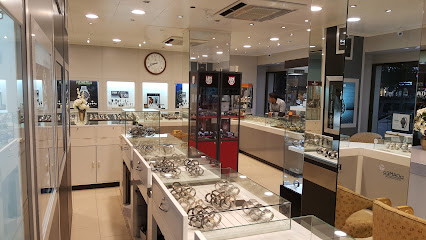
Mohd Balhowaimil Perfumes
Explore the aromatic treasures of Mohd Balhowaimil Perfumes in Al Ain, where tradition meets elegance in every unique fragrance.
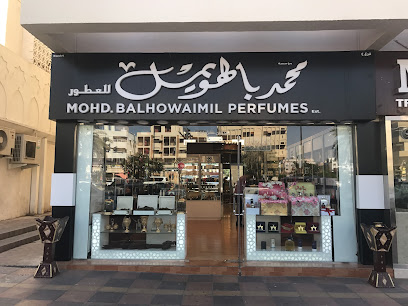
THE One Al Ain Mall
Experience the charm of THE One Al Ain Mall, your go-to destination for home decor, gifts, and unique finds in Abu Dhabi.
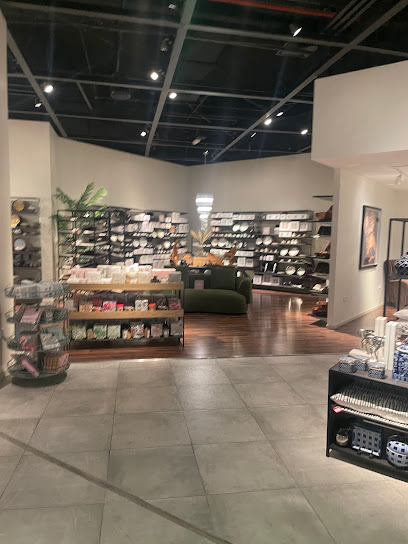
Next
Discover contemporary fashion at Next in Al Ain Mall, Abu Dhabi – where style meets comfort for the whole family.
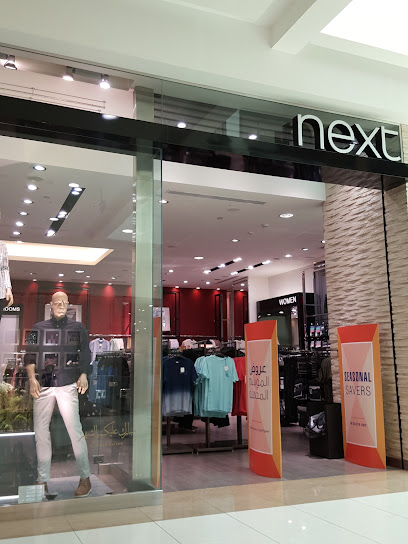
Unique Tshirt
Discover the art of personalization at Unique T-Shirt in Al Ain Mall, where creativity meets quality for a unique shopping experience.
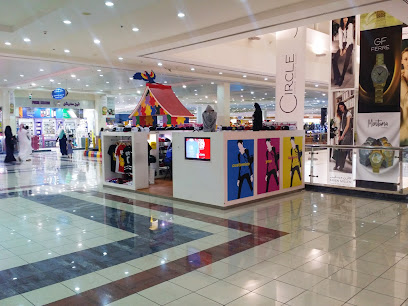
African shop in Al Ain
Explore the authentic African shop in Al Ain, a vibrant grocery store filled with spices, textiles, and cultural treasures from the heart of Africa.
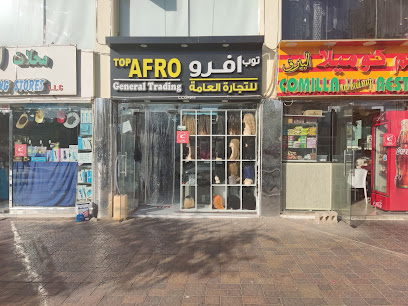
Onefabshop
Experience the ultimate shopping destination at Onefabshop in Al Jahili, Abu Dhabi, featuring a wide range of clothing, accessories, and leather goods.
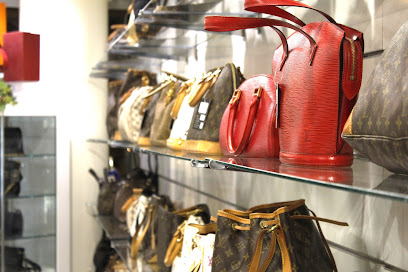
Essential bars & hidden hideouts
McGettigan's Al Ain
Discover the charm of Irish culture at McGettigan's Al Ain, a lively pub offering delicious food, drinks, and entertainment in the heart of the UAE.
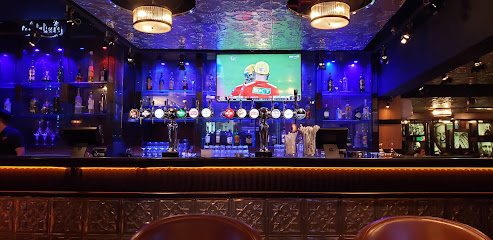
Trader Vic's
Experience the vibrant flavors of Polynesia at Trader Vic's in Abu Dhabi, where exquisite cuisine meets a lively tropical atmosphere.
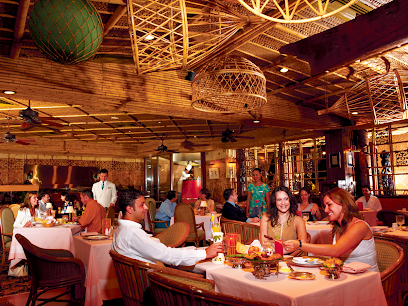
The Rooftop _ Aloft Al Ain
Discover The Rooftop at Aloft Al Ain: A premier lounge offering stunning views, refreshing drinks, and a lively atmosphere perfect for any occasion.
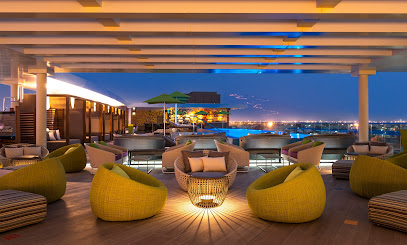
Moodz
Discover Abu Dhabi's nightlife at Moodz, a vibrant night club and sports bar offering exquisite drinks, music, and an electrifying atmosphere.
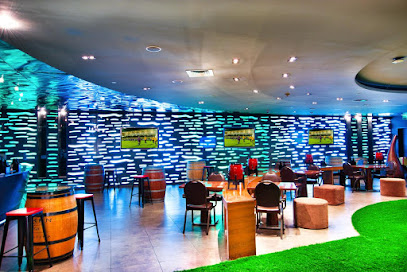
Club House
Discover Club House, the ultimate sports bar experience in Abu Dhabi, where delicious food meets exciting live sports in a vibrant atmosphere.
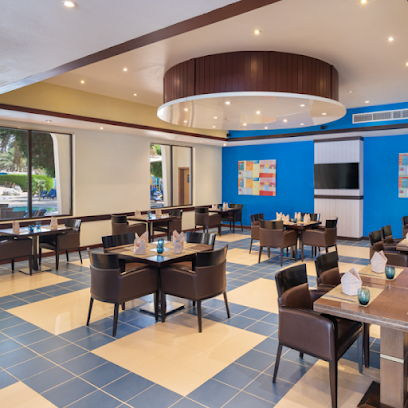
Peach Garden
Discover tranquility at Peach Garden, a bar in Al Ain offering exquisite drinks and a relaxing atmosphere amidst lush landscapes.

Pacos
Experience the vibrant flavors of Mexico at Pacos, a lively restaurant in Radisson Blu Hotel & Resort Al Ain, perfect for food lovers.
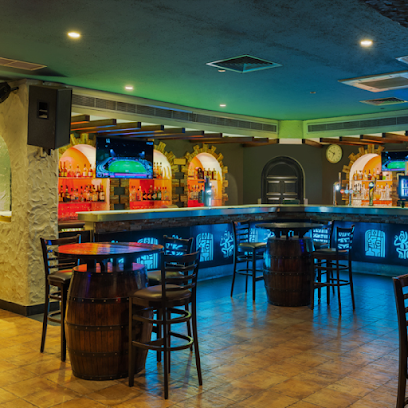
Palm Court Cafe
Discover Palm Court Cafe in Al Ain: where exquisite international cuisine meets a cozy lounge atmosphere in a luxurious resort setting.
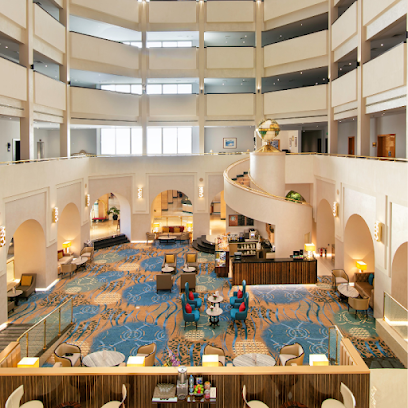
Al Ain Hilton Liqour Store
Explore the vibrant atmosphere of Al Ain Hilton Liquor Store, where quality beverages meet a welcoming ambiance in Al Sarouj, Abu Dhabi.
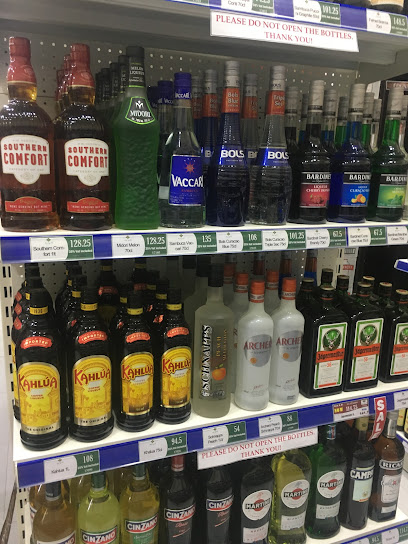
Md manik
Experience the vibrant nightlife at Md Manik Bar in Hili, Abu Dhabi, offering a perfect blend of drinks, entertainment, and a lively atmosphere.
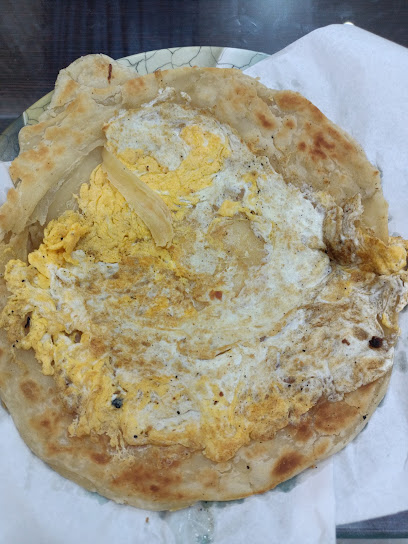
W XYZ Lounge _ Aloft Al Ain
Experience the vibrant nightlife at W XYZ Lounge, offering a stylish setting and exquisite drinks in the heart of Al Ain.
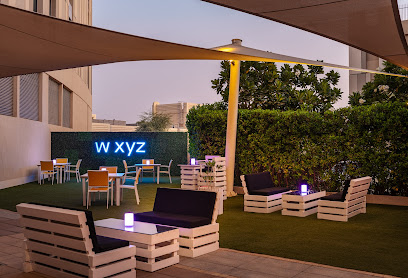
Lawrence's Bar
Discover the charm of Lawrence's Bar in Jabal Hafeet, Abu Dhabi - a perfect retreat for drink enthusiasts and adventure seekers alike.
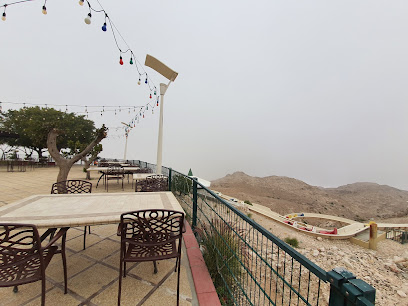
Aquarius Pool Bar
Discover the tranquil oasis of Aquarius Pool Bar in Al Jahili, Abu Dhabi, where refreshing cocktails and stunning views await.
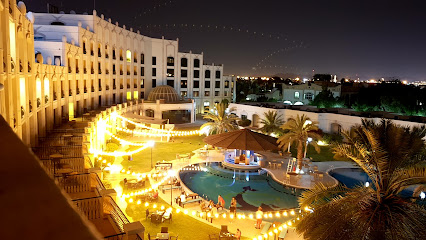
Biruk
Experience the vibrant nightlife of Abu Dhabi at Biruk, a lively bar in Al Qattarah offering exquisite drinks and a welcoming atmosphere.

Bar Bar Pastry
Experience the sweet charm of Bar Bar Pastry, a delightful pastry bar in Abu Dhabi's Central District, perfect for indulgent treats and a cozy atmosphere.

Local Phrases about Al Ain Oasis
-
- Helloمرحبا
[marhaba] - Goodbyeوداعا
[wadaa'an] - Yesنعم
[naam] - Noلا
[la] - Please/You're welcomeمن فضلك
[min fadlik] - Thank youشكرا
[shukran] - Excuse me/Sorryعذرا
[udhran] - How are you?كيف حالك؟
[kayfa haluk?] - Fine. And you?بخير. وأنت؟
[bikhayr. wa'ant?] - Do you speak English?هل تتكلم الإنجليزية؟
[hal tatakallam al'injlizia?] - I don't understandأنا لا أفهم
[ana la afham]
- Helloمرحبا
-
- I'd like to see the menu, pleaseأريد أن أرى القائمة، من فضلك
[urid an ara alqaimah, min fadlik] - I don't eat meatأنا لا آكل اللحم
[ana la akl allahm] - Cheers!في صحتك!
[fi sahtak!] - I would like to pay, pleaseأود أن أدفع، من فضلك
[awad an adfa', min fadlik]
- I'd like to see the menu, pleaseأريد أن أرى القائمة، من فضلك
-
- Help!النجدة!
[alnajdah!] - Go away!انصرف!
[ansarf!] - Call the Police!اتصل بالشرطة!
[atsil bialshurta!] - Call a doctor!اتصل بطبيب!
[atsil bityib!] - I'm lostلقد ضللت
[laqad dalalt] - I'm illأنا مريض
[ana mareed]
- Help!النجدة!
-
- I'd like to buy...أريد أن أشتري...
[urid an ashtari...] - I'm just lookingأنا فقط أتطلع
[ana faqat atatala] - How much is it?بكم هذا؟
[bikam hadha?] - That's too expensiveهذا غالي جدا
[hadha ghali jiddan] - Can you lower the price?هل يمكنك خفض السعر؟
[hal yumkinuk khafd alsaeer?]
- I'd like to buy...أريد أن أشتري...
-
- What time is it?كم الساعة؟
[kam alsaa'ah?] - It's one o'clockالساعة الواحدة
[alsaa'ah alwahidah] - Half past (10)الساعة العاشرة والنصف
[alsaa'ah al'ashirah walnisf] - Morningالصباح
[alsabah] - Afternoonالظهر
[adhdhuhur] - Eveningالمساء
[almasa'] - Yesterdayأمس
[ams] - Todayاليوم
[alyawm] - Tomorrowغدا
[ghadan] - 1واحد
[wahid] - 2اثنان
[ithnan] - 3ثلاثة
[thalatha] - 4أربعة
[arba'ah] - 5خمسة
[khamsah] - 6ستة
[sittah] - 7سبعة
[sab'ah] - 8ثمانية
[thamania] - 9تسعة
[tis'ah] - 10عشرة
[asharah]
- What time is it?كم الساعة؟
-
- Where's a/the...?أين هو/هي...؟
[ayn hu/hyi...?] - What's the address?ما هو العنوان؟
[ma hu al'anut?] - Can you show me (on the map)?هل يمكنك أن تريني (على الخريطة)؟
[hal yumkinuk an tarini (ala alkharitah)?] - When's the next (bus)?متى الحافلة القادمة؟
[mata alhafilah alqadimah?] - A ticket (to ....)تذكرة (إلى...)
[tadhkirah (ila...)]
- Where's a/the...?أين هو/هي...؟
History of Al Ain Oasis
-
Al Ain Oasis has been a cradle of human habitation for thousands of years. Archaeological findings suggest that the area was populated as early as the Bronze Age, around 3000 BCE. The oasis provided a vital source of water in an otherwise arid region, making it a focal point for early agricultural communities. These early settlers developed a sophisticated falaj irrigation system that is still in use today, underscoring the ingenuity of these ancient people.
-
One of the most remarkable features of Al Ain Oasis is its ancient falaj irrigation system. This network of underground and surface channels was designed to transport water from underground aquifers to the fields. The system, which dates back over 3,000 years, showcases the impressive engineering skills of the early inhabitants. The falaj system not only sustained agriculture but also supported the growth of date palms, which have been a crucial part of the local economy and culture.
-
Al Ain Oasis was strategically located along ancient trade routes that connected the Arabian Peninsula with the Levant and Mesopotamia. This made it an important stop for caravans carrying goods such as spices, textiles, and incense. The oasis served as a hub for commercial exchange, contributing to the economic prosperity of the region. The influx of traders and travelers also facilitated cultural exchanges, enriching the local heritage.
-
Numerous archaeological sites around Al Ain Oasis have yielded significant finds, including ancient tombs, tools, and pottery. One of the most notable discoveries is the Hili Archaeological Park, which features a collection of Bronze Age structures and artifacts. These discoveries provide invaluable insights into the lives of the early inhabitants and their interactions with neighboring regions.
-
In 2011, Al Ain Oasis was inscribed as a UNESCO World Heritage Site, recognizing its historical and cultural significance. The oasis is a living testament to the traditional falaj irrigation system and the sustainable agricultural practices that have been passed down through generations. The UNESCO designation has helped to preserve the oasis's unique heritage and promote its importance on a global scale.
-
Today, Al Ain Oasis stands as a serene and verdant sanctuary amidst the bustling city of Al Ain. It covers an area of about 1,200 hectares and contains over 147,000 date palms of various species. The oasis is meticulously maintained, blending traditional agricultural practices with modern conservation techniques. Visitors can explore the well-marked trails, visit the Eco-Centre, and experience the tranquil beauty that has characterized the oasis for millennia.
Al Ain Oasis Essentials
-
Al Ain Oasis is located in the city of Al Ain, which is part of the Emirate of Abu Dhabi in the United Arab Emirates. The nearest major airport is Abu Dhabi International Airport (AUH), approximately 140 kilometers away. From the airport, travelers can take a taxi or rent a car to reach Al Ain. The journey typically takes around 1.5 to 2 hours by road. Alternatively, Dubai International Airport (DXB) is about 120 kilometers away, and offers similar travel options.
-
Within Al Ain, taxis are a convenient and reasonably priced way to get around. The city also has a public bus system, which connects major attractions, including Al Ain Oasis. Car rental services are available and can be a flexible option for exploring at your own pace. Walking or cycling within the oasis itself is highly recommended to fully appreciate its beauty and tranquility.
-
The official currency in the United Arab Emirates is the Emirati Dirham (AED). Credit and debit cards are widely accepted in hotels, restaurants, and shops in Al Ain. ATMs are easily accessible throughout the city. However, it is advisable to carry some cash for small purchases or in case you visit smaller establishments that may not accept cards.
-
Al Ain is generally very safe for tourists, with a low crime rate. However, as with any travel destination, standard precautions should be taken. Avoid walking alone late at night in secluded areas and keep an eye on your belongings in crowded places. There are no specific high-crime areas targeting tourists in Al Ain. Always stay vigilant and aware of your surroundings.
-
In case of emergency, dial 999 for police assistance, 998 for ambulance services, and 997 for fire emergencies. Al Ain has well-equipped hospitals and clinics for medical emergencies. It is advisable to have travel insurance that covers medical emergencies. For minor health issues, pharmacies are available throughout the city where you can purchase over-the-counter medications.
-
Fashion: Do dress modestly, especially when visiting religious sites. Avoid wearing revealing clothing. Religion: Do respect local customs and traditions. Public Transport: Do be respectful to other passengers and give up your seat to elderly individuals. Don't eat or drink on public transport. Greetings: Do greet people with a polite 'As-salamu alaykum' or a handshake. Eating & Drinking: Do try local dishes and accept food offerings graciously. Don't refuse hospitality, as it is considered impolite.
-
To experience Al Ain Oasis like a local, visit during the early morning or late afternoon to avoid the midday heat. Engage with the local farmers who manage the traditional falaj irrigation system. Don't miss the Al Ain National Museum to gain a deeper understanding of the area's history and culture. If possible, attend a local festival or cultural event to experience traditional Emirati hospitality and entertainment.
Trending Landmarks in Al Ain Oasis
Nearby Cities to Al Ain Oasis
-
Things To Do in Sohar
-
Things To Do in Fujairah
-
Things To Do in Dubai
-
Things To Do in Sharjah
-
Things To Do in Ibri
-
Things To Do in Ajman
-
Things To Do in Khor Fakkan
-
Things To Do in Abu Dhabi
-
Things To Do in Umm Al Quwain
-
Things To Do in Dibba Al-Fujairah
-
Things To Do in Ras Al Khaimah
-
Things To Do in Rustaq
-
Things To Do in Bahla
-
Things To Do in Khasab
-
Things To Do in Nizwa










